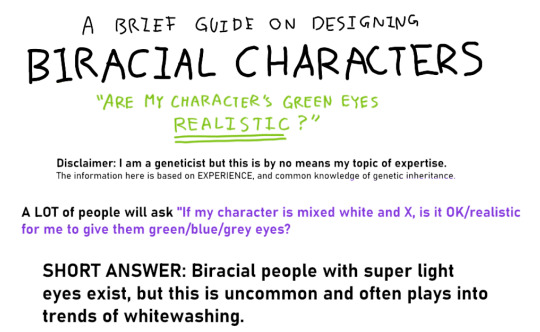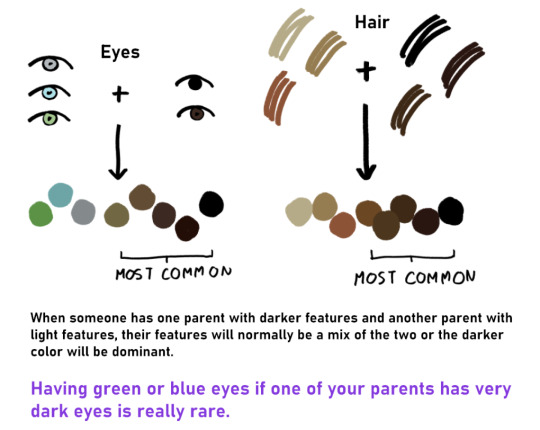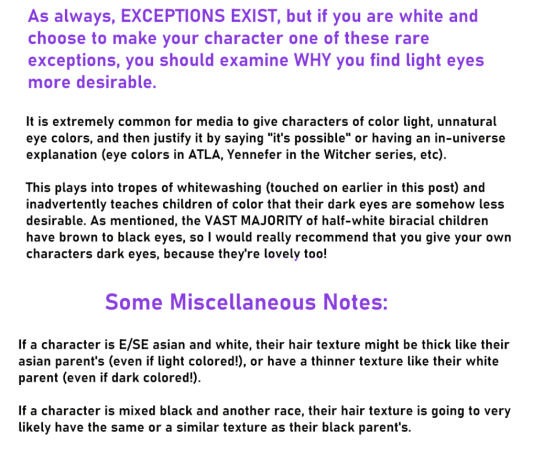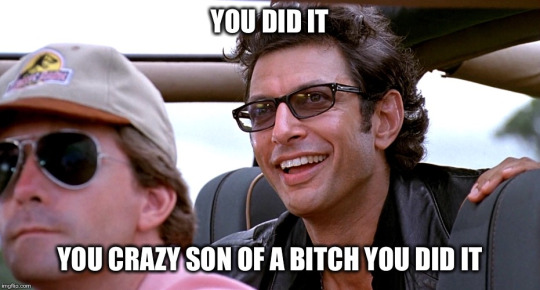A side blog meant to show case my personal writing and art exclusively but now showcases writing and art tips. writing mainly oc, next generation au ocs of various fandomsl. Art mainly of all my characters of all my stories. multi fandom but mainly slbp, naruto, akatsuki no yona, vampire knight, my hero academia, atla, and hetalia centrics. both the header and avatar are my own drawings and belong exclusively to me.
Don't wanna be here? Send us removal request.
Note
You've been visited by the random OC question fairy! :D ~☆
What does your character want people to know about themselves? What do they hide from other people? Why?
Well... shoots daughter just wants others to know that she is nothing like her firey tempered brother. That is rather calm, and loves nature. They hide that they're not as strong and confident as they appear, and are painfully shy. She only seems the complete opposite, arrogant and such, because she follows her much stronger headed brothers lead in many things. She hides this so that her brother, whose already highly protective and close to her, doesn't have to worry about her anymore than he already does due to her weakened immune system. Her family fussed over her so much she's determined to prove them otherwise, no matter what she has to sacrifice to get them to see her strentgh.
7 notes
·
View notes
Note
ok i’m writing my first piece of fan fiction, and i am very nervous,,,, how tf does one write dialogue,,,,, i haven’t written a story like this in so long it’s always essays for school 😭
what i do is actually talk to myself when i write my dialogue. when you talk to yourself, you have a grasp on what you’re writing. have you ever read something in front of an english class? has your mouth ever gotten tired from reading something aloud for so long? that’s the point of reading your dialogue aloud. the moment it gets hard to say aloud or you get tired from a line, you change it.
lots of people tend to stuff a ton of words and long-winded sentences into their dialogue, and that kind of stuff makes the whole scenario really unrealistic (i mean, reader insert, by definition, is unrealistic LMAO, but we ignore that), which is why you read it aloud.
another thing is balancing dialogue and narrative. you have to make sure that you have a good balance. dialogue tends to pace the story faster. narrative tends to pace the story slower. i get really annoyed whenever a writer chooses to fill the whole page with dialogue because it doesn’t show how well they are able to write, it just shows that they want to run through a marathon without pacing themselves. there’s a reason why stories can survive without dialogue. if there isn’t a purpose for the dialogue, cut it out because it’ll most likely drag the story on.
if you’re used to writing essays for school (:”D me right now LMFAO), make sure to divide your paragraphs a ton. especially since we’re on tumblr, readers depend on paragraph breaks like they’re oxygen. if the whole screen is filled with narrative and dialogue squished into giant paragraphs, of course, they want out LOL they didn’t come here for their eyes to bleed. remember that for every new speaker, you need a new paragraph !!! this is super important in not confusing the readers, and don’t put narrative and dialogue in the same paragraph !!! it’s like oil and water, they don’t mix !!!
that’s pretty much it for my tips concerning dialogue !!! good luck on your first fanfiction, it’s always a fun ride, something that you’ll always look back fondly at >:D
36 notes
·
View notes
Text
A tradition
In peacetime, the ruler grows their hair long. In war, they cut it short. A ruler with long hair is held in great esteem, for defending the peace. The traditional declaration of war is for the ruler to send their cut-off hair to the enemy ruler. The statement carries greater weight the longer the hair: to receive long hair says that you have angered one who is slow to anger, that you have incurred a wrath not easily woken.
261K notes
·
View notes
Text
Making this guide because I see this question time and time again on here. This post is mostly directed at white artists and writers who are wondering how to best design their characters of color. Full text description is at the end under the cut.




Full disclaimer, I am biracial (mixed E/SE asian and white) and grew up in majority poc communities, but I am just one person and this post is only based on my own experiences. If any other poc want to chime in, feel free to do so.
Once again, a full plaintext description is under the cut. If you find the information useful, please pass it on by reblogging <3
(Finally, even though I spoke vaguely on genetic inheritance, this is NOT the place to comment on certain features being mutations, as if being a mutation means something is inherently lesser or isn’t supposed to exist. Mutations is everything! All of our traits were at some point or another, an emerging mutation. Love yourself ^__^)
Keep reading
13K notes
·
View notes
Text
“Reading is to mind, as exercise is to the body.” —Joseph Addison
120 notes
·
View notes
Link
53 notes
·
View notes
Text
from last year’s workshop: Cool Writing Hacks that ripped my heart out but made my work better anyway.
-not every line of dialog needs an action attached to it. somebody doesn’t need to shrug or scratch their arm or glance at other people every two seconds of a conversation unless the motion means something. you’re not writing stage directions and you can trim this stuff down to make your dialog snappier. (this one in particular felt like a callout of me specifically, goddammit)
-if you want the audience to remember something–especially something that will be important in a climactic moment–you have to show/tell them at least twice beforehand. preferably three times. otherwise they will not remember! they simply will not!!
-the room layout isn’t usually all that important BUT if there’s going to be a fight scene you BETTER fucking figure out a way to convey that entire layout early in the scene or no one will know what the fuck is going on
-on that note, get somebody to read your fight scenes even if you are ABSOLUTELY SURE they make sense on the page. on the first pass they probably don’t. (unless you have a gift i would kill for. some do!)
-eyes cannot talk. eyes can’t talk! it’s easy to say that someone has “rage in their eyes” or “their eyes were telling me to run” but that’s all shorthand for other body language we notice subconsciously! try digging in and describing that body language instead. you will likely get something richer that way
7K notes
·
View notes
Text
An artist : Aw man! I saw my arts were reposted on Instagram. I’ve asked them to take my arts down but they ignored me.
Me : Say no more! Click this link, then click ‘fill out this form’. Fill the form and wait for about 1-2 days, the staffs will remove the image you were reporting from the reposter’s account :^)
360K notes
·
View notes
Text
working on the plot: 🚫🙈🤢🙅
working on tiny worldbuilding/character details that probably won’t even make it into the story: 👌😍💯👁️
49K notes
·
View notes
Text
must a story have “plot”
is it not enough that I just, like, care about the characters a whole bunch
70K notes
·
View notes
Text
favourite character: *dies*
me: nah get up bitch ur fine
345K notes
·
View notes
Text
Q&A: Sci-Fi Arsonal
Any tips on creating sci fi weapons? I want a whole range of them, rifles, guns, swords, knives, bow&arrow, cannons, missiles, bombs, etc.. Using being made with up sci fi materials down to the projectiles, computer controlled, mind controlled etc?
If you’re having a hard time coming up with weapons for your sci-fi setting, my thought would be looking at equipment sourcebooks for RPGs. This will also help you pick the gear that best fits your setting. Core books can also be useful, as most RPGs will include some sample weapons and armor as part of the main rules.
As a sort of obvious example, if you’re writing a cyberpunk dystopia, a bunch of beam weapons wouldn’t make much sense. At the same time, a distant future setting wouldn’t be restricted to kinetic firearms, unless you wanted that.
So, with that in mind, a few things come to mind. You’re not likely to see swords in a science fiction setting, unless they serve some cultural role, if you’re dealing with things that can shrug off ranged attacks, or if you’re looking at fights in very tight spaces. (For example: You might see these in boarding actions on starships, especially if your ranged weapons would puncture the hull.)
The bow is a similar situation. You’re not likely to see it outside of very niche circumstances, or if there are cultural reasons. The weapon is very unwieldy, so even if you need to deliver a large payload, there’s more efficient ways to do that.
None of that means you can’t do these things. There’s a lot of sci-fi settings that incorporate various melee and bow weapons for any number of reasons. If you need a ranged weapon that is absolutely silent and has no energy signature, a bow or crossbow may be the most efficient way to achieve that. It’s also entirely possible you have energy bows of some kind that simply deliver far more killing power than the “conventional,” weapons in your world.
Moving beyond that, there’s an awkward truth to a lot of energy weapons in fiction. You have three kinds:
Kinetic weapons. These will usually differ from real world firearms in some technologically significant way, and the performance of the weapon is probably far beyond what you could achieve with gunpowder, but it’s still a gun. You pull the trigger and bullets come out. (This includes smart bullets, where the ammunition itself is electronically guided, and weapons with targeting assistance built in.) Gauss weapons are one of the more common examples of this (both coilguns and railguns. These propel the projectile by using and manipulating electromagnetic fields.
Beam weapons. This can be anything from a laser to something more advanced like Star Trek‘s Phasers and disruptors. These can be further split into short burst beams and sustained fire. The former will fire a brief burst of light, while the later can maintain a sustained beam, and may need some time on target to take effect. In some cases these will be used interchangeably. Either because the weapon has alternate firing modes or because the users are exercising trigger discipline.
Finally, we have energy projectile weapons which fire visible, discrete, energy blobs. As a functional consideration, these frequently travel at comically low speeds in visual media because, otherwise, you wouldn’t be able to track the projectile with your eyes. Star Trek sometimes gets inconsistent between these two, with both pulse and beam phasers and disruptors.
When you step back from that, a lot of this simply becomes different flavors of “space magic.” Star Trek takes it on the chin here, but it’s an excellent illustration. We’ve seen antiproton, polaron, tachyon, plasma, tetryon, and dozens of other beam weapon variants. While each one has it’s own contextual implication, from a narrative perspective they’re just different flavors of “ray gun.”
The, “space magic,” comment may sound critical, but it’s not. To an extent, in the context of a setting like Star Trek, the exact flavor of a weapon adds texture and credibility to the world. They’re not firing, “death rays,” they’re using, “a compressed tetryon beam.” What’s the difference? There isn’t one, just that the latter sounds more technical and scientific, while the former sounds more fantastic. There isn’t a right answer to which is a better fit for your world, it depends on the kind of story you’re trying to tell.
When it comes to military hardware in a sci-fi setting, I’ve got a soft spot for Warhammer 40k‘s batshit insanity. It’s a setting that’s built off of material like Dune, Starship Troopers, Star Wars, and a lot of other classic sci-fi. The killing power the setting’s weapons is downright bonkers. We’re talking about a setting where a standard infantry weapon that can explosively liquify its target on impact is considered underpowered. You can skim through 40k’s wargear online, if you’d like to get an idea of what your options are there. Just remember that Games Workshop is very litigious about their trademarks.
Ultimately, the best way to get a feel for the kinds of technology you want to use in your setting is by starting with the genre, and looking at what’s out there. While I’m not a fan of the politics, Starship Troopers, is a good starting point. Armor by John Steakly is another solid option to follow that up with. Dune is more about the politics, but the eccentric technology of its world is critical to how it functions, and it’s worth exposing yourself to it. If you find the books intimidating, I’d recommend the miniseries from the early-2000s.
While some of this might be a little tricky to run down, my recommendation on RPG splatbooks is heavily influenced by the pencil and paper RPGs I’ve played. The Trinity Technical Manual from the game of the same name had a lot of interesting concepts. (Trinity itself was an interesting setting, though it did suffer from White Wolf’s inconsistent sensitivity.) D20 Future (not, technically a weapons list, thought that was included) was a supplement for D20 Modern. Because it’s bundled in with D&D 3.5 (legally), you can find the text for most D20 Modern (including D20 Future) in online SRDs. Unfortunately, the item focused D20 Future Tech supplement is not as easily available, and prohibitively expensive. Without knowing exactly what you’re looking for, GURPS in general is an easy recommendation, but pinning down a specific setting (and a short list of source books) could be trickier. GURPS Space has been around in various printings for over 30 years, and if you can find a cheap copy, it should probably provide you with excellent ideas. (Incidentally, there are four different editions, and the prices vary wildly.) There’s also a mix of supplemental books for GURPS Space, which is a rarity for GURPs.
It’s not about weapons, and could be a little tricky to track down, but I do have a real favorite in Star Trek: The First Line. This was sourcebook for Last Unicorn Game’s short lived Star Trek RPG in the late 90s, and focused on Starfleet Intelligence. It’s a very interesting look into espionage in a setting that only clings to this side of Clarke’s Third Law through aggressive technobabble.
-Starke
This blog is supported through Patreon. If you enjoy our content, please consider becoming a Patron. Every contribution helps keep us online, and writing. If you already are a Patron, thank you.
Q&A: Sci-Fi Arsonal was originally published on How to Fight Write.
186 notes
·
View notes
Text
when you finally write more than one paragraph in a writing session:

2K notes
·
View notes
Text
Been soon long!! But I promise I'll start posting again soon! Still habe things in the works! Hope you all stay toned for what's next!
0 notes
Text
Get Organized
Writing tip: Get organized. Put your notes, research, and texts in order so you can find what you need when you need it.
214 notes
·
View notes

